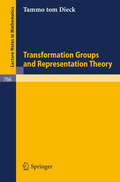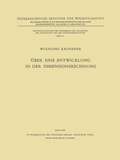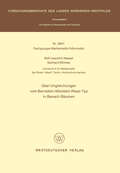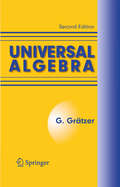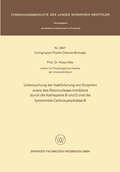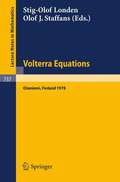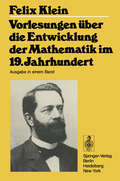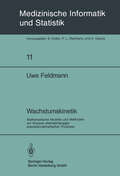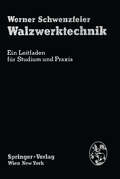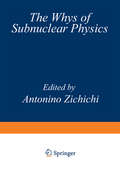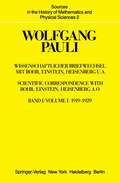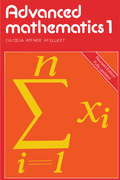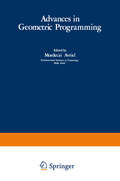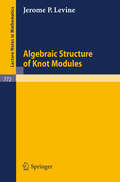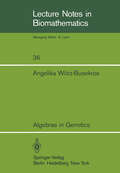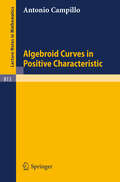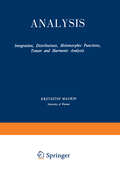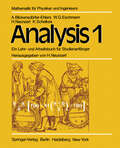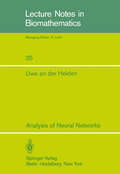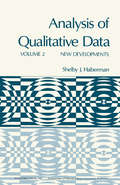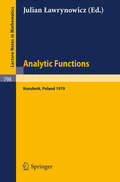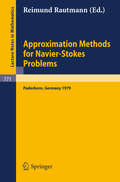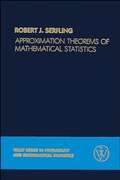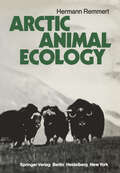- Table View
- List View
Trioker mathematisch gespielt: Logik und Fantasie mit Dreiecken
by Marc Odier Y. Roussel2 Die 24 logischen Steine ........ . . . . .. . 11 3 Puzzles und Formen . . . . . . . . . . . .. . . . 12 . A Ganz einfache Puzzles . . . . . . . . . .. . . . 12 B Einfache Puzzles. . . . . . . . . . . . .. . . . 13 . C Schwierige Puzzles ................ 14 D Erste Puzzles mit 24 Steinen . . . . . . .. . . 15 E Eine erste Freiheit ................ 16 F Eine zweite Freiheit ............... 17 G Zwei Freiheiten gleichzeitig ........ 18 H Einschrankungen ................ 19 I Verfeinerte Einschrankungen ......... 20 K Einander erganzende Freiheiten und E- schrankungen . . . . . . . . . . . . . .. . . . 21 . . L Puzzles, die besonders schwierig sind ... 22 M Das Riesensechseck . . . . . . . . . . . .. . . 24 . 4 Gesellschaftsspiele .................. 25 A Einfache Spiele .................. 25 B Das symmetrische Duell. . . . . . . . . .. . . 27 C Spiel fiir N Spieler. . . . . . . . . . . .. . . . 30 . 5 Erste Ubungen und FragesteUungen . . . . .. . 32 A Zuerst einige Ubungen, die rasch erledigt sind . . . . . . . . . . . . . . . . . . .. . . 32 . . . . B Einiges zum Sechseck .............. 33 C Wozu die Gleichheit dient .......... 33 D Beschreibung der Steine durch Fra- spiele . . . . . . . . . . . . . . . . . .. . . . 34 . . . E Erste Zuordnungen . . . . . . . . . . . .. . . 36 . F Drei Pfeiltypen . . . . . . . . . . . . . . . 37 . . . G Zweier-Puzzles und ihre Darstellungen ... 38 H Dreier-Puzzles, Vierer-Puzzles, N-Puzzles . 42 6 Weitere Dberlegungen und Dbungen . . . . .. . 45 A Definition der Spielsteine . . . . . . . . .. . . 45 B Anzahl der Spielsteine . . . . . . . . . .. . . . 45 C Logische Anordnung der Spielsteine . . . .. 47 3 D Bezeichnung der Spielsteine . . . . . . .. . . 49 E Systematik der Puzzles zur Wiederholung 49 F Blumen mit der Zahl 3 . . . . . . . . . .. . . 53 . 7 Voll durchdachte Puzzlebeispiele . . . . . . .. . 55 A Logische Puzzles. . . . . . . . . . . . .. . . . 55 .
Über eine Entwicklung in der Dimensionsrechnung (Denkschriften der Österreichischen Akademie der Wissenschaften #116 / 9)
by W. KaunznerÜber Ungleichungen vom Bernstein-Nikolskii-Riesz-Typ in Banach Räumen (Forschungsberichte des Landes Nordrhein-Westfalen)
by Rolf Joachim NesselUniversal Algebra
by George GrätzerUniversal Algebra has become the most authoritative, consistently relied on text in a field with applications in other branches of algebra and other fields such as combinatorics, geometry, and computer science. Each chapter is followed by an extensive list of exercises and problems. The "state of the art" account also includes new appendices (with contributions from B. Jónsson, R. Quackenbush, W. Taylor, and G. Wenzel) and a well selected additional bibliography of over 1250 papers and books which makes this an indispensable new edition for students, faculty, and workers in the field.
Untersuchung der Inaktivierung von Enzymen sowie des Ribonuclease-Inhibitors durch die Kathepsine B und D und die lysosomale Carboxypeptidase B (Forschungsberichte des Landes Nordrhein-Westfalen #2847)
by Klaus OttoVolterra Equations: Proceedings of the Helsinki Symposium on Integral Equations, Otaniemi, Finland, August 11-14, 1978 (Lecture Notes in Mathematics #737)
by O. J. Staffans S. O. LondenVorlesungen über die Entwicklung der Mathematik im 19. Jahrhundert: Teil I (Grundlehren der mathematischen Wissenschaften #24/25)
by Felix KleinWachstumskinetik: Mathematische Modelle und Methoden zur Analyse altersabhängiger populationskinetischer Prozesse (Medizinische Informatik, Biometrie und Epidemiologie #11)
by U. FeldmannThe Whys of Subnuclear Physics (The Subnuclear Series #15)
by Antonio L. ZichichiFrom 23 July to 10 August 1977 a group of 125 physicists from 72 laboratories of 20 countries met in Erice to attend the 15th Course of the International School of Subnuclear Physics. The countries represented at the School were: Belgium, Bulgaria, Denmark, Federal Republic of Germany, Finland, France, Hungary, Ireland, Israel, Italy, Japan, the Netherlands, Norway, Poland, Sweden, Switzerland, the United Kingdom, the United States of America and Venezuela. The School was sponsored by the Italian Ministry of Public Education (MPI), the Italian Ministry of Scientific and Technologi cal Research (MRST) , the North Atlantic Treaty Organization (NATO), the Regional Sicilian Government (ERS) and the Heizmann Institute of Science. The School was very exciting due to the impressive number of frontier problems which were discussed. Being the 15th year of the School, it was decided to review all outstanding "Whys". At various stages of my work I have enjoyed the collaboration of many friends whose contributions have been extremely important for the School and are highly appreciated. I would like to thank Dr.A. Gabriele, Ms.S. McGarry, Mr. and Mrs. S. Newman, Ms.P. Savalli and Ms.M. Zaini for the general scientific and administrative work. Finally, I would like to thank most warmly all those ~n Erice, Bologna and Geneva who helped me on so many occasions and to whom I feel very much indebted.
Wissenschaftlicher Briefwechsel mit Bohr, Einstein, Heisenberg u.a.: Band 1: 1919–1929 (Sources in the History of Mathematics and Physical Sciences #2)
by Wolfgang PauliAdvances in Geometric Programming (Mathematical Concepts and Methods in Science and Engineering #21)
by Mordecai AvrielIn 1961, C. Zener, then Director of Science at Westinghouse Corpora tion, and a member of the U. S. National Academy of Sciences who has made important contributions to physics and engineering, published a short article in the Proceedings of the National Academy of Sciences entitled" A Mathe matical Aid in Optimizing Engineering Design. " In this article Zener considered the problem of finding an optimal engineering design that can often be expressed as the problem of minimizing a numerical cost function, termed a "generalized polynomial," consisting of a sum of terms, where each term is a product of a positive constant and the design variables, raised to arbitrary powers. He observed that if the number of terms exceeds the number of variables by one, the optimal values of the design variables can be easily found by solving a set of linear equations. Furthermore, certain invariances of the relative contribution of each term to the total cost can be deduced. The mathematical intricacies in Zener's method soon raised the curiosity of R. J. Duffin, the distinguished mathematician from Carnegie Mellon University who joined forces with Zener in laying the rigorous mathematical foundations of optimizing generalized polynomials. Interes tingly, the investigation of optimality conditions and properties of the optimal solutions in such problems were carried out by Duffin and Zener with the aid of inequalities, rather than the more common approach of the Kuhn-Tucker theory.
Algebras in Genetics (Lecture Notes in Biomathematics #36)
by Angelika Wörz-BusekrosThe purpose of these notes is to give a rather complete presentation of the mathematical theory of algebras in genetics and to discuss in detail many applications to concrete genetic situations. Historically, the subject has its origin in several papers of Etherington in 1939- 1941. Fundamental contributions have been given by Schafer, Gonshor, Holgate, Reiers¢l, Heuch, and Abraham. At the moment there exist about forty papers in this field, one survey article by Monique Bertrand from 1966 based on four papers of Etherington, a paper by Schafer and Gonshor's first paper. Furthermore Ballonoff in the third section of his book "Genetics and Social Structure" has included four papers by Etherington and Reiers¢l's paper. Apparently a complete review, in par ticular one comprising more recent results was lacking, and it was difficult for students to enter this field of research. I started to write these notes in spring 1978. A first german version was finished at the end of that year. Further revision and translation required another year. I hope that the notes in their present state provide a reasonable review and that they will facilitate access to this field. I am especially grateful to Professor K. -P. Hadeler and Professor P. Holgate for reading the manuscript and giving essential comments to all versions of the text. I am also very grateful to Dr. I. Heuch for many discussions during and after his stay in TUbingen. I wish to thank Dr. V. M.
Analysis: Part II Integration, Distributions, Holomorphic Functions, Tensor and Harmonic Analysis (Analysis #2)
by Krzysztof MaurinThe extraordinarily rapid advances made in mathematics since World War II have resulted in analysis becoming an enormous organism spread ing in all directions. Gone for good surely are the days of the great French "courses of analysis" which embodied the whole of the "ana lytical" knowledge of the times in three volumes-as the classical work of Camille Jordan. Perhaps that is why present-day textbooks of anal ysis are disproportionately modest relative to the present state of the art. More: they have "retreated" to the state before Jordan and Goursat. In recent years the scene has been changing rapidly: Jean Dieudon ne is offering us his monumentel Elements d'Analyse (10 volumes) written in the spirit of the great French Course d'Analyse. To the best of my knowledge, the present book is the only one of its size: starting from scratch-from rational numbers, to be precise-it goes on to the theory of distributions, direct integrals, analysis on com plex manifolds, Kahler manifolds, the theory of sheaves and vector bun dles, etc. My objective has been to show the young reader the beauty and wealth of the unsual world of modern mathematical analysis and to show that it has its roots in the great mathematics of the 19th century and mathematical physics. I do know that the young mind eagerly drinks in beautiful and difficult things, rejoicing in the fact that the world is great and teeming with adventure.
Analysis 1: Ein Lehr- und Arbeitsbuch für Studienanfänger (Mathematik für Physiker und Ingenieure)
by A. Blickensdörfer-Ehlers W.G. Eschmann H Neunzert K. SchelkesAnalysis of Neural Networks (Lecture Notes in Biomathematics #35)
by U. an HeidenThe purpose of this work is a unified and general treatment of activity in neural networks from a mathematical pOint of view. Possible applications of the theory presented are indica ted throughout the text. However, they are not explored in de tail for two reasons : first, the universal character of n- ral activity in nearly all animals requires some type of a general approach~ secondly, the mathematical perspicuity would suffer if too many experimental details and empirical peculiarities were interspersed among the mathematical investigation. A guide to many applications is supplied by the references concerning a variety of specific issues. Of course the theory does not aim at covering all individual problems. Moreover there are other approaches to neural network theory (see e.g. Poggio-Torre, 1978) based on the different lev els at which the nervous system may be viewed. The theory is a deterministic one reflecting the average be havior of neurons or neuron pools. In this respect the essay is written in the spirit of the work of Cowan, Feldman, and Wilson (see sect. 2.2). The networks are described by systems of nonlinear integral equations. Therefore the paper can also be read as a course in nonlinear system theory. The interpretation of the elements as neurons is not a necessary one. However, for vividness the mathematical results are often expressed in neurophysiological terms, such as excitation, inhibition, membrane potentials, and impulse frequencies. The nonlinearities are essential constituents of the theory.
Analytic Functions. Kozubnik 1979: Proceedings of a Conference Held in Kozubnik, Poland, April 19-25, 1979 (Lecture Notes in Mathematics #798)
by J. LawrynowiczWith contributions by numerous Experts
Approximation Methods for Navier-Stokes Problems: Proceedings of the Symposium Held by the International Union of Theoretical and Applied Mechanics (IUTAM) at the University of Paderborn, Germany, September 9-15, 1979 (Lecture Notes in Mathematics #771)
by R. RautmannApproximation Theorems of Mathematical Statistics (Wiley Series in Probability and Statistics #162)
by Robert J. SerflingApproximation Theorems of Mathematical Statistics This convenient paperback edition makes a seminal text in statistics accessible to a new generation of students and practitioners. Approximation Theorems of Mathematical Statistics covers a broad range of limit theorems useful in mathematical statistics, along with methods of proof and techniques of application. The manipulation of "probability" theorems to obtain "statistical" theorems is emphasized. Besides a knowledge of these basic statistical theorems, this lucid introduction to the subject imparts an appreciation of the instrumental role of probability theory. The book makes accessible to students and practicing professionals in statistics, general mathematics, operations research, and engineering the essentials of: * The tools and foundations that are basic to asymptotic theory in statistics * The asymptotics of statistics computed from a sample, including transformations of vectors of more basic statistics, with emphasis on asymptotic distribution theory and strong convergence * Important special classes of statistics, such as maximum likelihood estimates and other asymptotic efficient procedures; W. Hoeffding's U-statistics and R. von Mises's "differentiable statistical functions" * Statistics obtained as solutions of equations ("M-estimates"), linear functions of order statistics ("L-statistics"), and rank statistics ("R-statistics") * Use of influence curves * Approaches toward asymptotic relative efficiency of statistical test procedures
Arctic Animal Ecology
by Hermann RemmertA large number of comprehensive publications has been devoted to the Antarctic, to its plant and animal life. It is therefore relatively easy to familiarize oneself with the current state of Antarctic research. Nothing comparable is available for the Arctic. The heterogeneity and richness of the northern polar regions seem to have discouraged any attempt at a synthethic approach. This book has evolved from an attempt to summarize the results of 15 years of ecological and physiological research work in the Arctic - mostly on Spitsbergen. The necessity of comparing our results and the ecological conditions of Spitsbergen with other arctic regions grew into a full-sized book on arctic animal ecology. It is not meant as an exhaustive survey ofthe relevant literature. Instead I have tried to show how closely the various fields of research are interwoven, how many questions can be solved if only notice is taken of fellow scientists and their results, and how much arctic animals have in common. This book would not have been possible without the helpfulness of many colleagues. Above all I should like to mention Professor Ronning and Professor Solem of Trondheim University (Norway), Professor Arnthor Gardasson of Reykjavik University (Iceland), Dr. NettIeship, Dr. Oliver and Dr. Ryder of Canada and Professor West of Fairbanks University (Alaska, USA).
